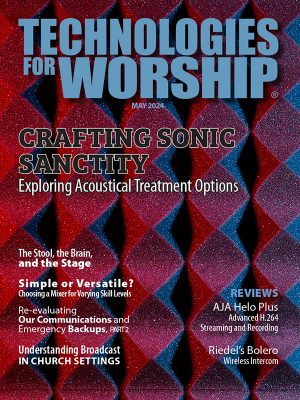
Securing the necessary budget for worship tech upgrades and maintenance is crucial for delivering a high-quality worship experience. However, making a compelling case for these funds requires preparation, strategy, and clear communication. Here’s a step-by-step guide on how to effectively ask for the worship tech budget you need.
Assess Your Current Needs
Start by conducting a thorough assessment of your current tech setup. Identify what’s working well and what’s outdated or in need of repair. Make a detailed inventory of all equipment, including sound systems, lighting, projectors, and software.
Pinpoint specific issues that are affecting the quality of worship services. This could be recurring technical problems, insufficient equipment for the team, or limitations that hinder the worship experience. Gathering input from your tech team and worship leaders can provide valuable insights into these pain points.
Define Clear Objectives
Ensure that your tech needs align with the broader goals of the church. For example, if your church aims to enhance live streaming capabilities, upgrading audio-visual equipment is essential. Clearly articulate how the proposed tech investments will support the church’s mission and vision.
Define what success looks like for each tech upgrade. For instance, improved sound quality, better visual presentations, or more reliable live streaming. Setting measurable outcomes helps justify the investment and demonstrates accountability.
Securing the necessary budget for worship tech requires a strategic approach that includes thorough assessment, clear objectives, detailed proposals, and effective communication.
Research and Develop a Detailed Proposal
Research the cost of the equipment and services you need. Obtain quotes from reputable vendors and compare prices. Be thorough in your cost estimates, including potential installation, training, and maintenance expenses.
Develop a detailed budget proposal that outlines each item or service needed, along with its cost. Break down the budget into categories, such as audio equipment, lighting, software, and training. This transparency helps decision-makers understand exactly what the funds will be used for.
Emphasize any long-term savings that may result from the investment. For example, upgrading to energy-efficient LED lighting can reduce utility costs, and investing in durable, high-quality equipment can decrease future repair expenses.
Build Your Case
Clearly articulate the benefits of the proposed tech upgrades. Focus on how these improvements will enhance the worship experience, improve reliability, and support the church’s outreach efforts. Use concrete examples and testimonials from other churches or industry experts if available.
Use data to support your case. This could include statistics on equipment failures, feedback from congregants, or examples of how tech issues have impacted services. Visual aids such as charts and graphs can make your presentation more compelling.
Anticipate questions and concerns that decision-makers might have. Be prepared to address issues such as cost, implementation time, and the impact on current operations. Offering solutions to potential problems demonstrates your thoroughness and foresight.
Aligning your tech needs with the church’s mission and demonstrating the tangible benefits of the investment, you can make a compelling case for the funds you need.
Communicate Effectively
Timing is crucial when presenting your budget request. Choose a time when key decision-makers are available and can give your proposal the attention it deserves. Avoid periods of high stress or other major church activities.
Create a formal presentation to deliver your proposal. Use a clear and professional format, such as a PowerPoint presentation, to walk through your assessment, objectives, budget breakdown, and benefits. Practice your presentation to ensure clarity and confidence.
Engage your audience by inviting questions and feedback. This interaction can help build support for your proposal and demonstrate your commitment to addressing any concerns. Be open to suggestions and willing to adjust your proposal based on feedback.
Follow Up and Show Accountability
After your presentation, provide detailed documentation of your proposal, including the budget breakdown and supporting evidence. This allows decision-makers to review the information at their own pace.
Follow up with decision-makers to address any additional questions or concerns. Keep the lines of communication open and provide any additional information they may need to make an informed decision.
Once the budget is approved, demonstrate accountability by providing regular updates on the progress of tech upgrades. Share success stories and measurable outcomes to show the positive impact of the investment. This transparency builds trust and supports future budget requests.
Securing the necessary budget for worship tech requires a strategic approach that includes thorough assessment, clear objectives, detailed proposals, and effective communication. By aligning your tech needs with the church’s mission and demonstrating the tangible benefits of the investment, you can make a compelling case for the funds you need. Remember to follow up and show accountability, ensuring that decision-makers see the positive impact of their investment on the worship experience.





